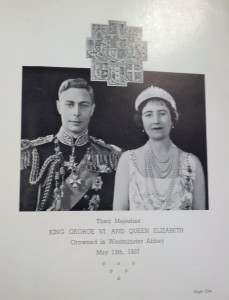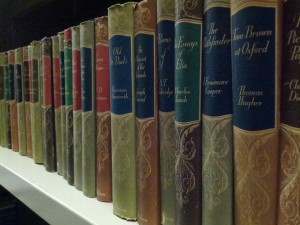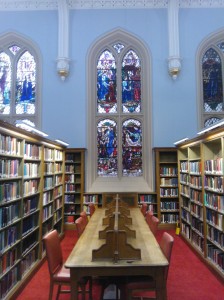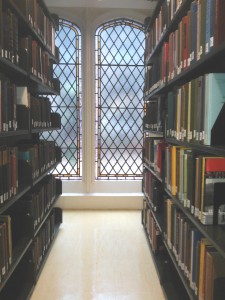
Image: Title page of a manuscript copy of The secret commonwealth by Robert Kirk, 1692. Held in The Laing Collection (La.III.551).
The day of Halloween is upon us and here at the UCF we’re marking the occasion the only way we know how…with some seriously spooky books! A quick click through the catalogue reveals some absolutely terrifying reading material. Titles such as Bats in roofs: a guide for surveyors (699.878), A bibliographical ghost revisits his old haunts (.01 Fra.), and Safe handling of corpses containing radioactive substances (WN650 Nat 1966) are lurking on our shelves. It’s enough to make even the most stoic librarian shudder!
Continuing to search for the magical and mystical amongst our collections, I came across a title by Robert Kirk; The secret commonwealth of elves, fauns & fairies: a study in folk-lore & psychical research (tOD 91 KIR). Kirk was a Gaelic scholar, folklorist, and alumnus of The University of Edinburgh. He collated this collection of folklore between 1691 and 1692 but died without seeing it published, which wasn’t until over a century later in 1815, by Sir Walter Scott. Several copies are held amongst the universities collections, whilst an 1893 edition, digitised by the HathiTrust, can be found here. Besides being a very significant work in its own right, it has recently served as the inspiration for the title of the second volume in Philip Pullman’s Book of Dust trilogy.
We only hold one item however, with the word Halloween actually in its title. This is Alexander Macgregor’s Highland superstitions; connected with the Druids, fairies, witchcraft, second-sight, Hallowe’en, sacred wells and lochs, with several curious instances of Highland customs and beliefs (SSSA.S.841). Published in Stirling in 1901 it lives amongst the School of Scottish Studies collection. A slim, unassuming volume, bound in forest-green, it details the events of All Hallows Eve as follows:
“Hallowe’en in Gaelic means “Samhuinn,” that is “Samhtheine,” the fire of peace. It is a Druidical festival, at which the fire of peace is regularly kindled. There is no night in the year which the popular imagination has stamped with a more peculiar character than Hallowe’en. It was the night, above all others, when supernatural influences prevailed. It was the night for the universal walking abroad of all sorts of spirits, fairies, and ghosts, all of whom had liberty on that night. It was customary in many parts of Scotland to have hundreds of torches prepared in each district for weeks before Hallowe’en, so that, after sunset on that evening, every youth able to carry a blazing torch, or “samhnag,” ran forth to surround the boundaries of their farms with these burning lights, and thereby protect all their possessions from the fairies. Having thus secured themselves by these fires of peace, all the households congregated to practice the various ceremonies and superstitious rites of that eventful evening. (p. 44)”
Some of the rites and ceremonies Macgregor describes we might recognise, such as ducking for apples or the reading of fortunes in teacups. Others, less so, “the wetting of the shirt sleeve, the sowing of hemp seed, pulling the stalks of corn, throwing the clue of blue yarn into the pit of the kiln, the white of eggs put into a glass of water” (p.46) do not feature in our modern autumnal festivities. An evocative account of the latter ceremony follows, in which a fresh egg is punctured with a pin and allowed to drip into a glass of pure water, to reveal one’s destiny:
“The glass is then held up to the candle, and some important event in the future of the life of the inquirer is found exhibited hieroglyphically in the glass, – the egg droppings assuming an endless variety of shapes, in which the skilful in these matters discover a resemblance to things, which, by association, clearly point out coming circumstances and events. All this was done by an old, weird Sybil, who had been invited for the special purpose of reading to the young folks the various signs and indications of this privileged right. (p.49)”
Perhaps you will take a leaf out of our book (and Macgregor’s) by adding this early 20th century rite into your revelries this evening. The Beltane Samhuinn Fire Festival is keeping the smahnag tradition alive with their yearly blazing display on Calton Hill. Happy Samhuinn!
Daisy Stafford, UCF Library Assistant


















